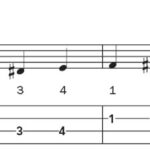Learning to drive a manual transmission car can seem daunting, but it’s a rewarding skill. Many aspiring drivers wonder, “How Fast Can You Learn To Drive Manual?” There’s no one-size-fits-all answer, as learning curves vary. However, this guide provides a realistic timeline based on experience with countless learners. We’ll cover key milestones and practical tips to accelerate your progress.
Setting Realistic Expectations: Embrace the Learning Process
Before diving into timelines, it’s crucial to set realistic expectations. Learning stick shift involves coordinating your feet and hands in a new way. Mistakes are inevitable, and that’s okay. Embrace stalls and jerky starts as part of the process. A relaxed approach, focusing on learning from each attempt, will lead to faster progress than striving for instant perfection.
Timeline to Manual Mastery: From Beginner to Confident Driver
While individual progress varies, here’s a general timeline for learning to drive manual:
Day 1: The Basics (2-3 hours)
- Getting the Car Moving (30-60 minutes): This initial stage focuses on mastering starting from a standstill in first gear. Aim for 10-20 successful starts to build muscle memory. Expect to feel uncomfortable, but this is normal. Focus on coordinating the clutch and gas pedals.
- Upshifting and Downshifting (1-2 hours): This step introduces the complexity of coordinating clutch, gas, and gear shifter. Practice in a spacious area, breaking down each action (clutch release, rev matching, shifting, clutch engagement). Don’t rush; prioritize smooth transitions.
Week 1: Building Confidence (5-8 hours)
After a day of practice, allow yourself time to process. With 5-8 hours of practice throughout the week, you should feel reasonably competent navigating most roads. Expect some nervousness, especially in traffic. Avoid distractions like the radio to maintain focus.
Weeks 2-4: Mastering the Art (5-8 hours per week)
With consistent practice, driving stick will become second nature. Clutch control, finding the biting point, and hill starts will feel smoother. You’ll likely stop consciously thinking about each action. Occasional stalls might still happen, but they’ll be less frequent and easier to recover from.
Accelerating Your Learning: Proven Tips
-
Practice in Parking Lots: Start in large, empty parking lots to master the basics without the pressure of traffic. Churches, recreation facilities, high schools, colleges, and office parks often have empty lots during off-peak hours.
-
Intentionally Stall: Stalling on purpose demonstrates that it’s not a catastrophe. The engine simply turns off. This exercise reduces anxiety associated with stalling.
-
Master Quick Starts: Practice quickly getting into first gear from a stop. This builds confidence for real-world situations like traffic lights and intersections.
-
Choose the Right Car: Consider learning on a diesel vehicle, pickup truck, or sportier car. These often have more forgiving engines for beginners. Alternatively, an older car you’re not worried about can reduce performance anxiety.
-
The 100 Repetition Rule: Practice getting into first gear at least 100 times. This repetition builds muscle memory and unconscious competence.
-
Communicate with Other Drivers: Use your hazard lights and a “Learning Stick Shift” sign to alert other drivers, giving you space and reducing pressure.
Conclusion: Patience and Persistence Pay Off
Learning to drive manual takes time and effort. While the timeline provides a general guide, your individual progress depends on practice frequency and learning style. Stay patient, persistent, and celebrate your successes along the way. The reward of mastering this valuable skill is well worth the effort.

